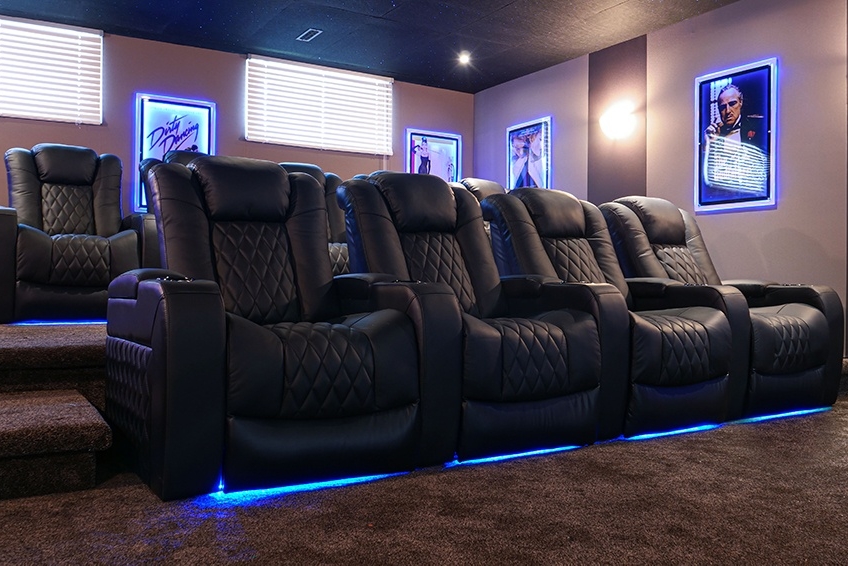
An Intro to Home Theater Risers and Riser Platforms: What, When and Why?
If you are trying to set up your home theater with more than one row of seating, you most likely will need theater risers or riser platforms. But what are risers for home theaters, and how can you use them to DIY that stadium seating layout you wanted? Well, we’re here to explain to you what risers are and why you might need them. It should help you figure out if home theater risers for stadium-style seating is right for your home theater.
What are Home Theater Risers?
Not all home theaters need theater risers or riser platforms! You only need to consider getting risers if you plan on having multiple rows of media chairs. If you have multiple rows of chairs and no risers, the back row won’t be able to see the screen over the front row! That back row of seating needs elevated. It’s an easy fix to install risers in your home theater so that all members of your audience can see the whole screen without the back of someone’s head in the way. By adding risers, you make it so that everyone who is in your home theater is able to have a good view of the screen without needing to contort there body. So all risers do is make it so everyone can see the screen. But when do you need to get risers for your home theater?
Does Your Home Theater Need Risers?
Wondering whether or not to install risers in your home theater? It all depends on your screen position and how many seats your home theater has. If you don’t know how many seats your home theater should have, check out our previous blog post on figuring out how many chairs you need!
But let’s first talk about where your screen is positioned. If you have a very high ceiling, and the screen is high up, the back row could be able to see the screen. But with a typical ceiling height, the back row’s view will be blocked by the row in front of it. So unless you have a high screen, like a TV set above a fireplace mantel, you’ll need theater risers to ensure everyone has a great view of the screen.
Alright, but now you need to consider how many seats you are going to have and your desired layout for your home theater furniture. So go consult that blog post we mentioned real quick. Anyway, if you’re not planning on having multiple rows of movie chairs, then you don’t need theater risers. But if you plan on having a couple or more rows of theater chairs, we strongly recommend that you build a seating design that uses stadium-style elevated back rows using home theater risers.
Theater Risers for Media Rooms Elevate the Space – Literally
Okay, this one’s mostly about aesthetics, but it still might be useful: a big riser platform set behind a row of home theater chairs is cool. You can put an entertainment room sectional sofa on it and voila! An elevated “back row” of seating that’s cozy and casual. It makes your space more versatile, and it looks really cool. Not to mention it’s a great seating idea for a basement home theater that can’t accommodate more than one theater riser.
There’s a lot more to be said about home theater risers, like the ideal height, their distance from the screen and much more, but that’s for a future blog post; this one’s just here to introduce to you what they are. Look forward a more detailed blog post about risers to come!
